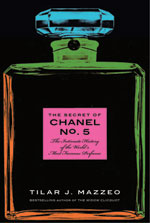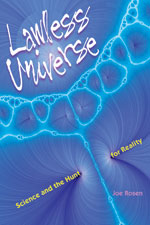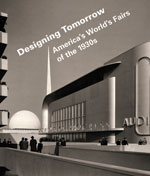Scent of a Woman
 In the industry, it's known as le monstre. It was an icon and a sex symbol decades before Marilyn Monroe said that it was what she wore—all that she wore—to bed, spiking the nation's blood pressure. And by one tally a bottle of the stuff is sold, on average, every 30 seconds.
In the industry, it's known as le monstre. It was an icon and a sex symbol decades before Marilyn Monroe said that it was what she wore—all that she wore—to bed, spiking the nation's blood pressure. And by one tally a bottle of the stuff is sold, on average, every 30 seconds.
The story of this fragrant phenomenon is mined in The Secret of Chanel No. 5 (Harper, 2010), by Tilar J. Mazzeo, the English Department's Jenny McKean Moore Writer-in-Residence for 2010-11.
And there is plenty of mining to do here. "With Chanel No. 5," writes Dr. Mazzeo, "nothing is ever as simple as it seems." Nearly a century of hoopla, hype, and business dealings has shrouded the scent in a fog of fact and fiction, as only befits a legend.
Dr. Mazzeo brings readers into the world of perfumers and the science of olfaction satisfaction. But the story of Chanel No. 5 is even further spiced with secret formulas, exiled Russian royalty, business rivalries, desire, world war, high society, and the rich passion and intuition of Coco Chanel, whose perfume worked alongside her trendsetting fashions in "redefining twentieth-century femininity," writes Dr. Mazzeo.
It was an emotionally charged pursuit for Ms. Chanel, who grew up an orphan and as a young woman flirted with a career in the cabaret—a move that pushed her into "a kind of social limbo," writes Dr. Mazzeo. It was a shadow that, remarkably, she would never quite outrun.
At a time when roses and jasmine could be indicators of a woman's caste (and chasteness), Ms. Chanel set off on the chase for "a scent that would utterly confound those lines between the fragrance worn by a nice, respectable girl and one worn by a seductress," writes Dr. Mazzeo. Chanel No. 5 would emerge on shelves in 1921, an immediate and enduring hit.
"Women are not flowers," Ms. Chanel once said. "Why should they want to smell like flowers?"
What she sought was something more "mysterious." A woman, she said, "should smell like a woman and not like a flower."
The Edge of Science
 Although the universe is chock-full of great questions, it is (sigh …) disappointingly short on easy, scientifically airtight answers. Lawless Universe (Johns Hopkins University Press, 2010), then, aims to create the next best thing: informed consumers.
Although the universe is chock-full of great questions, it is (sigh …) disappointingly short on easy, scientifically airtight answers. Lawless Universe (Johns Hopkins University Press, 2010), then, aims to create the next best thing: informed consumers.
The book, by adjunct physics professor Joe Rosen, is a primer on the scientific process and the ways in which scientists arrive at their conclusions.
Their work is far from black-and-white. After all, as Dr. Rosen points out, attempts by humans to understand the universe are unavoidably … human. Scientific pursuits are forever confronted with tripping hazards like biases and perceptions and physical limitations.
"This book," Dr. Rosen writes, "is a sequel to, a complement for, even an antidote for, books that create the misimpression that science can explain everything."
And that includes the universe. The truth, he argues, is that while parts of the universe can be understood and explained with science, the whole universe itself is utterly unique (as far as we know) and therefore untestable through the established scientific process we use to test everything else. The best we'll ever able to say about it, he writes, amounts to: "It is because it is."
Science "can go only so far in comprehending nature," Dr. Rosen writes. "In this book, we'll see just how far science can go."
It might seem like heady stuff for the lay reader. But in a casual, office hours-esque tone, Dr. Rosen knocks down the structure of good science and rebuilds it for the reader, brick by brick, beginning with the most basic differences between objectivity and subjectivity. And through topics that might otherwise leave readers feeling adrift—like quantum theory, metaphysics, and the anthropic principle—Dr. Rosen proves a calm, conscientious guide who sticks by the reader's side.
The Book of 'Tomorrow'
As the darkness of the Great Depression settled over the country in the 1930s, millions of Americans found a ray of hope in a set of six world's fairs held on U.S. soil that offered reason to believe in the promise of tomorrow.
 From New York to San Francisco, a vibrant "tomorrow" was on display—the House of Tomorrow, the Road of Tomorrow, Futurama—providing a vision of a streamlined, science- and industry-fueled future and inciting a stylistic revolution.
From New York to San Francisco, a vibrant "tomorrow" was on display—the House of Tomorrow, the Road of Tomorrow, Futurama—providing a vision of a streamlined, science- and industry-fueled future and inciting a stylistic revolution.
"What might have been an aesthetic experiment or marketing ploy before 1929 soon became an urgent response to crisis," Laura Burd Schiavo writes of the era of world's fairs in Designing Tomorrow: America's World's Fairs of the 1930s (Yale University Press, 2010). They "were popular interpretations of what it meant to be modern in the 1930s," she writes, "lessons that could be taken home and applied to everyday lives."
The book—a series of essays co-edited by Dr. Schiavo, PhD '03, an assistant professor in GW's Museum Studies Department, and Robert W. Rydell, a history professor at Montana State University—is the companion volume to the exhibit, "Designing Tomorrow", at the National Building Museum in Washington, D.C.
Dr. Schiavo is the co-curator of the exhibit (on view through July 10, 2011), along with GW alumna Deborah Sorensen, MA '04, an assistant curator at the museum.
The book's collection of essays, along with more than a hundred photos and illustrations, yields insights into the enduring impact of these six extravaganzas that collectively formed a pivot point in American history.
—Danny Freedman
